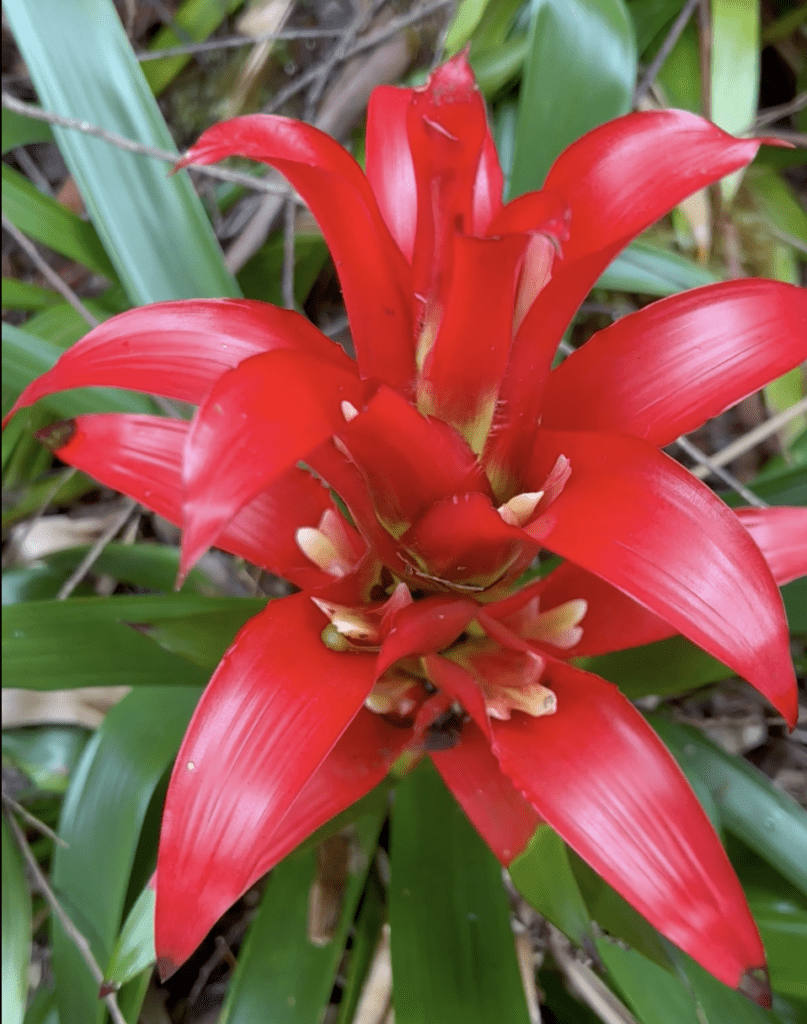What Is a Cloud Forest? Exploring the Enchanting World of Cloud Forests
A cloud forest, also known as a fog forest, is a specialized type of tropical or subtropical forest characterized by persistent low-level cloud cover. These ethereal forests are typically found in mountainous regions with high humidity and are often nestled between 2,500 to 10,000 feet above sea level. What distinguishes cloud forests from other forest types is the constant presence of clouds or fog that envelops the canopy, creating a misty and dreamlike atmosphere.
The Beauty of Cloud Forests
Cloud forests possess an otherworldly beauty that is truly captivating. The perpetual mist and moisture in the air create an enchanting ambiance, lending an ethereal touch to the surroundings. The lush green foliage, draped in delicate mosses and epiphytes, further enhances the magical aura of these forests. Walking through a cloud forest feels like stepping into a fairy tale, where every corner holds a new discovery waiting to unfold.
Unique Characteristics of Cloud Forests
Temperature and Humidity: Cloud forests experience cooler temperatures compared to lowland forests due to the high altitude. The persistent cloud cover and mist contribute to a relatively stable and cooler microclimate. Additionally, these forests are characterized by high humidity, creating an ideal environment for the growth of diverse plant species.
Epiphytic Abundance: Cloud forests are renowned for their rich epiphytic flora. Epiphytes are plants that grow on other plants without causing harm. Orchids, bromeliads, and ferns are some of the iconic epiphytes found in cloud forests. They cling to branches and trunks, utilizing the abundant moisture and nutrients available in the mist-laden air.
Biodiversity Hotspots: Cloud forests are biodiversity hotspots, harboring a staggering array of plant and animal species. The unique environmental conditions and geographical isolation contribute to the evolution of distinct flora and fauna. From rare and endemic orchids to elusive cloud forest birds, these ecosystems are teeming with life.
Water Absorption and Regulation: Cloud forests play a crucial role in water absorption and regulation. The dense vegetation acts as a sponge, capturing water from clouds and mist, which gradually seeps into the ground. This process helps maintain a steady water supply to streams and rivers downstream, benefiting both humans and wildlife.
The Unique Charms of the Kona Cloud Forest in Hawaii
The Kona Cloud Forest in Hawaii stands as a unique and captivating example of a cloud forest ecosystem. While it shares some similarities with other cloud forests around the world, it also possesses distinct characteristics that set it apart. The Kona Cloud Forest’s location on the volcanic slopes of the Big Island, combined with the island’s unique climate, creates a truly mesmerizing environment. The interplay of cool trade winds and regular cloud cover nurtures a rich diversity of flora and fauna. Towering ohia trees, endemic Loulu palms, and a variety of epiphytic plants contribute to the forest’s vibrant greenery. While the Kona Cloud Forest may not reach the immense elevations of some other cloud forests, its exceptional beauty and the remarkable adaptations of its inhabitants make it a cherished and treasured destination for nature enthusiasts.
Flora of Cloud Forests: A Symphony of Colors
The flora of cloud forests is a mesmerizing tapestry of vibrant colors and exquisite forms. These forests are home to an abundance of plant species, many of which are unique and endemic to their respective cloud forest regions. Here are some notable examples:

Tree Ferns: Ancient Guardians of the Forest
Tree ferns are iconic inhabitants of cloud forests. These majestic plants, resembling relics from prehistoric times, add an aura of mystery to the forest. With their tall trunks and delicate fronds, tree ferns create a striking silhouette against the misty backdrop.
Orchids: Nature’s Masterpieces
Orchids reign supreme in the realm of floral elegance. Their delicate blooms, ranging from subtle pastels to vibrant hues, bring a touch of enchantment to cloud forests. With their intricate and diverse forms, orchids have evolved fascinating adaptations to thrive in these mist-laden environments.
Giant Rhubarb: A Prehistoric Giant
The giant rhubarb, also known as “gunnera,” is a prehistoric-looking plant that adds a sense of drama to cloud forests. With colossal leaves that can span up to six feet in diameter, the giant rhubarb creates a surreal atmosphere. These leaves collect water from the surrounding mist, channeling it toward the plant’s roots.

Bromeliads: Nature’s Water Reservoirs
Bromeliads are a diverse group of plants known for their ability to collect and store water. These epiphytic wonders have evolved specialized structures, such as rosettes, which capture rainwater and fog droplets. The water reservoirs formed by bromeliads provide a habitat for a wide range of organisms, from insects to amphibians.
Fauna of Cloud Forests: A Haven for Unique Creatures
The fauna of cloud forests is as diverse and captivating as their flora. These mist-shrouded realms harbor a wide variety of animal species, each adapted to thrive in this extraordinary environment. Let’s delve into some of the remarkable creatures that call cloud forests their home:
Quetzals: The Jewel of the Clouds
The resplendent quetzal, with its iridescent emerald plumage and elongated tail feathers, is the epitome of beauty in the cloud forest. Considered a sacred bird by the ancient Mayans and Aztecs, the quetzal represents freedom and is often associated with mythical stories.
Howler Monkeys: Guardians of the Canopy
The deep, echoing roars of howler monkeys reverberate through the misty expanse of cloud forests. These charismatic primates are the largest in the New World, swinging effortlessly through the tree branches. Their vocalizations serve as territorial calls and can be heard from miles away.
Poison Dart Frogs: Nature’s Colorful Gems
Poison dart frogs, adorned in vibrant hues of red, blue, and yellow, are a sight to behold in the cloud forest. These small but striking creatures are known for their potent toxins, which serve as a defense mechanism against predators. Their dazzling colors act as a warning, signaling their toxicity.
Spectacled Bears: The Cloud Forest’s Shy Giants
Spectacled bears, also known as Andean bears, are the only bear species native to South America. These elusive creatures inhabit cloud forests, where they feed on a variety of vegetation, including bromeliad hearts and bamboo shoots. Despite their large size, spectacled bears are typically docile and prefer to avoid human contact.
Conclusion
What Is a Cloud Forest? It is a realm of enchantment, an ethereal world where clouds and forests intertwine to create a breathtaking tapestry of beauty and biodiversity. These mist-shrouded ecosystems captivate us with their unique characteristics, vibrant flora, and captivating fauna. However, cloud forests face significant threats and require our collective efforts to ensure their preservation for future generations. Let us cherish and protect these wondrous realms, recognizing their ecological significance and the profound connection they hold with our planet’s well-being.
Frequently Asked Questions (FAQs)
What is the difference between a cloud forest and a rainforest?
Cloud forests and rainforests differ in their altitude, biodiversity, and cloud cover. Cloud forests are typically found at higher elevations, often on mountains, where there is a persistent cloud cover. These forests have a cooler and more humid climate compared to rainforests. Rainforests, on the other hand, are located at lower elevations and are characterized by high levels of rainfall throughout the year. They have a warmer and more tropical climate.
What is the significance of cloud forests?
Cloud forests play a vital role in regulating water resources, supporting biodiversity, and providing ecological services to surrounding ecosystems. They act as natural water catchments, absorbing moisture from clouds and mist, which helps maintain a steady water supply for rivers and streams downstream. Additionally, cloud forests serve as crucial habitats for a wide range of plant and animal species, many of which are unique and endemic to these ecosystems.
Are cloud forests under threat?
Yes, cloud forests are facing significant threats due to human activities and climate change. Deforestation, habitat fragmentation, and the expansion of agriculture pose significant challenges to the preservation of cloud forests. Additionally, the alteration of cloud formation patterns and rising temperatures associated with climate change may disrupt the delicate balance of these ecosystems. Conservation efforts, including protected areas and sustainable land-use practices, are crucial for safeguarding cloud forests.
What are some notable cloud forest regions around the world?
Cloud forests are found in various regions across the globe. Some notable cloud forest regions include the Kona Cloud Forest in Hawaii, the Monteverde Cloud Forest in Costa Rica, the Cloud Forests of the Andes in South America, the Knuckles Mountain Range in Sri Lanka, and the Atherton Tablelands in Australia. Each region showcases unique flora and fauna, making them hotspots for biodiversity and ecological exploration.
Can you tell me more about cloud forest conservation efforts?
Cloud forest conservation efforts focus on preserving these fragile ecosystems and promoting sustainable land-use practices. Conservation organizations work alongside local communities and governments to establish protected areas, implement reforestation projects, and raise awareness about the ecological importance of cloud forests. Additionally, initiatives such as ecotourism provide economic incentives for local communities to protect and conserve these remarkable habitats.
How can I contribute to cloud forest conservation?
You can contribute to cloud forest conservation by supporting reputable conservation organizations working in cloud forest regions, such as the Kona Cloud Forest Sanctuary. Donations and volunteering opportunities can help fund research, habitat restoration, and community-based initiatives.
{ “@context”: “https://schema.org”, “@type”: “FAQPage”, “mainEntity”: [{ “@type”: “Question”, “name”: “What is the difference between a cloud forest and a rainforest?”, “acceptedAnswer”: { “@type”: “Answer”, “text”: “Cloud forests and rainforests differ in their altitude, biodiversity, and cloud cover. Cloud forests are typically found at higher elevations, often on mountains, where there is a persistent cloud cover. These forests have a cooler and more humid climate compared to rainforests. Rainforests, on the other hand, are located at lower elevations and are characterized by high levels of rainfall throughout the year. They have a warmer and more tropical climate.” } },{ “@type”: “Question”, “name”: “Q: What is the significance of cloud forests?”, “acceptedAnswer”: { “@type”: “Answer”, “text”: “Cloud forests play a vital role in regulating water resources, supporting biodiversity, and providing ecological services to surrounding ecosystems. They act as natural water catchments, absorbing moisture from clouds and mist, which helps maintain a steady water supply for rivers and streams downstream. Additionally, cloud forests serve as crucial habitats for a wide range of plant and animal species, many of which are unique and endemic to these ecosystems.” } },{ “@type”: “Question”, “name”: “Q: Are cloud forests under threat?”, “acceptedAnswer”: { “@type”: “Answer”, “text”: “Yes, cloud forests are facing significant threats due to human activities and climate change. Deforestation, habitat fragmentation, and the expansion of agriculture pose significant challenges to the preservation of cloud forests. Additionally, the alteration of cloud formation patterns and rising temperatures associated with climate change may disrupt the delicate balance of these ecosystems. Conservation efforts, including protected areas and sustainable land-use practices, are crucial for safeguarding cloud forests.” } },{ “@type”: “Question”, “name”: “Q: What are some notable cloud forest regions around the world?”, “acceptedAnswer”: { “@type”: “Answer”, “text”: “Cloud forests are found in various regions across the globe. Some notable cloud forest regions include the Kona Cloud Forest in Hawaii, the Monteverde Cloud Forest in Costa Rica, the Cloud Forests of the Andes in South America, the Knuckles Mountain Range in Sri Lanka, and the Atherton Tablelands in Australia. Each region showcases unique flora and fauna, making them hotspots for biodiversity and ecological exploration” } },{ “@type”: “Question”, “name”: “Q: Can you tell me more about cloud forest conservation efforts?”, “acceptedAnswer”: { “@type”: “Answer”, “text”: “Cloud forest conservation efforts focus on preserving these fragile ecosystems and promoting sustainable land-use practices. Conservation organizations work alongside local communities and governments to establish protected areas, implement reforestation projects, and raise awareness about the ecological importance of cloud forests. Additionally, initiatives such as ecotourism provide economic incentives for local communities to protect and conserve these remarkable habitats.” } },{ “@type”: “Question”, “name”: “Q: How can I contribute to cloud forest conservation?”, “acceptedAnswer”: { “@type”: “Answer”, “text”: “You can contribute to cloud forest conservation by supporting reputable conservation organizations working in cloud forest regions, such as the Kona Cloud Forest Sanctuary.. Donations and volunteering opportunities can help fund research, habitat restoration, and community-based initiatives.” } }] }